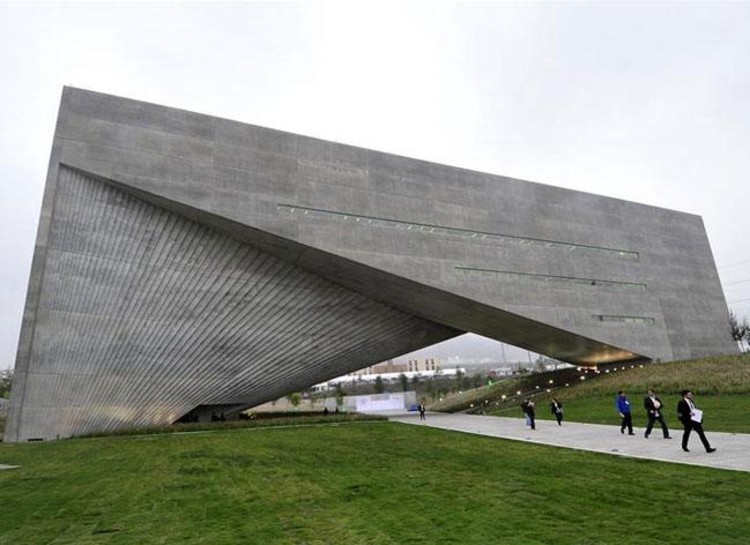
In the eyes of an architect, concrete is practically a fetish. Currently, it's used in a wide range of projects and buildings, from infrastructure to residential, and offers an architect a great deal of freedom in generating eye-catching results. To start, we will show you how to pre-dimension concrete structures and understand what cracks in concrete structures mean. Continue reading to get our tips on how to use concrete and get the best result possible.

Consider its Level of Exposure to the Elements
It's true that concrete is synonymous with "economic" since the structure doesn't require any additional lining. However, a certain degree of care is essential in undergoing the process, especially since your concrete will be directly exposed to all kinds of weather. It's fundamental that you consider these weather factors from the very beginning and the impact that they will have on your finished product. Furthermore, it's necessary to specify the composition of the mix that you will use, allowing for optimal workability and minimal pores and crevices in the structure.

In the case of possible leakage and/or mold infestations and other pathogens, the preemptive use of fungicides, anti-bacterials, and sealants are indispensable. The design details will also play a part in the structure's defense against the elements. For example, the use of eaves prevents humidity and the various problems that it causes.
Specify the Resin and Varnish
Because concrete is a porous material, it's important to be specific about the resin, varnish, and water-proofing that you will use to protect your work against the wear of time and harsh bactericides. There are many different products available for your specific needs, and enlisting the help of a technical consultant can be invaluable for an optimal result. Some products have little to no effect on concrete once they are applied while others can add brightness or intensify its tonality. Certain varnishes and resins only protect against water damage, while other sealants protect against acid rain, other corrosive agents in the air, and mold.

Protect the Metalwork
Never allow the structure's metal and ironwork to be exposed as contact with water and other outside elements can cause seriously compromise the structure. It is recommended that, along with the dimensions predetermined by the structural calculations, you consider an additional layer of concrete over the structure to prevent water and mold from reaching the metalwork.

Choose the Adequate Framework for Your Project
The framework supports the mixture of cement, sand, and water up until it dries. Once dry, the concrete will take the shape of the mold according to the desired look by the architect and the client. The framework can consist of a variety of materials, yielding a diverse array of textures and appearances.
Wooden frameworks are widely used and are made up of individual boards or planks. In the case of the former, you can take advantage of the natural knots found in the wood or go for a smoother finish. The boards can be resined for optimal adaptability or laminated for a smoother and more uniform appearance. If adequate precautions are taken, wood can be reused (an easy way to save money on a project).

Metal frameworks provide optimal benefits when compared to wood since they allow for complete reutilization, better resistance, and a faster set up time. Metal also provides a smoother texture, recommended for bigger projects as it allows for optimal productivity in a shorter amount of time.

Keep in Mind the Frameworks That Match the Qualities of Your Project
As you build with concrete, always keep in mind the end product's quality and how the framework will impact it. This means thinking not only in the technical aspects of the work, but the visual as well. In the majority of projects, it's common to find molds arranged in the horizontal direction of the wood, but nothing can stop the architect from deciding on different patterns. However, as stated before, don't forget to consider your work's exposure to the elements, especially since water tends to drip in through the cracks of a mold's design. In Casa das Histórias Paula Rego, Souto de Moura arranged the forms diagonally in the upper part of the pyramidal volumes, so that with the passage of time, a pattern was formed in the shape of a tree.

Grey or Pigmented Concrete?
Even though concrete gives off grey tones in its natural state, the use of pigment for coloration is becoming increasingly common. With a variety of reds, yellows, greens, blacks, and cobalt blue tones, water-resistant coloring is becoming increasingly popular on the market. Thanks to this, it's easier than ever to make your work stand out.
Without impacting the physical characteristics of the concrete, these new color additives maintain their quality when incorporated into the dry concrete mix. It is best to use 2-5% pigment per kilo of mix.

Correcting Imperfections
Finally, special precautions you should take to assure the final quality of the concrete. In the event of defects in the concrete, it's necessary to undergo a stuccoing process that will fill in the pores and create a smooth surface using a mixture of cement, acrylic additive, water, and a metal trowel. This will correct any imperfections.

Specify Every Detail of the Project
During the technical planning stage of the project, it's important that your team reviews every detail of the construction process: the ironwork, measuring the contents of the concrete mixture, pre-dimensioning the structure along with its eaves, gutters, expansion joints, as well as other aspects that will allow you to avoid future problems with the proposed design.

Bet on Versatility
Along with being used for facades or interior walls, concrete can be used for other systems, such as furniture.

References
AECweb. Como especificar fôrmas para concreto? Conheça os principais critérios. Disponível em: <https://www.aecweb.com.br/cont/m/rev/como-especificar-formas-para-concreto-conheca-os-principais-criterios_16627_39_0>. Acesso em 28 de Julho 2018.
Cuidados para a execução do concreto aparente. Disponível em:<http://www.mapadaobra.com.br/capacitacao/cuidados-para-execucao-de-concreto-aparente/>. Acesso em 29 Julho 2018.
Metro Modular. Fôrmas para concreto aparente. Disponível em: <http://www.metromodular.com.br/forma-concreto-aparente>. Acesso em 28 Julho 2018.

